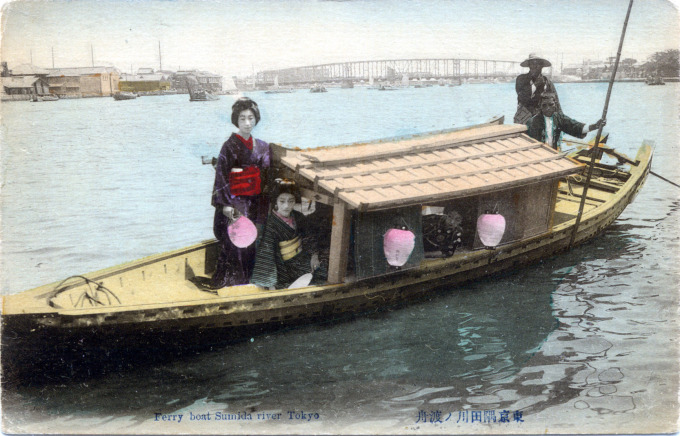
Geisha are carried across the Sumida River aboard a yane-bune, a canopied boat that ferried passengers across the river (also called a chochin-bune, lantern boat). In the distance is Shin-o-hashi [new great bridge], an steel truss span erected in 1911 across the Sumida that replaced a Edo era wooden span last constructed in 1885.
See also:
Shinohashi, Tokyo, c. 1910-1912.
“In her memoir the Sarashima Lady makes reference to a still older literary appearance, in Ise monogatari (Tales of Ise), a series of romantic episodes built around the verse of the legendary poet Ariwara no Narihira.
“In this story, a group of courtiers from the capital are reminded of their loved ones by the appearance of white sea birds as they are crossing the Sumida River on board a ferry.
“The story later became a sort of pictorial cliché, to the point where no mention of the river and its banks along this stretch would be complete without a reference.”
– Japanese Capitals in Historical Perspective: Place, Power and Memory in Kyoto, Edo and Tokyo, edited by Nicolas Fieve & Paul Waley, 2003


Pingback: Shinohashi, Tokyo, c. 1910-1912. | Old Tokyo
Pingback: Azumabashi Bridge, Tokyo, c. 1910. | Old Tokyo